Are you skeptical about the educational value of puzzle games? Think again! Kanoodle, the popular puzzle game for young kids, is here to prove you wrong.
You might think, ‘Why should I let my kids waste their time on a simple game?’ Well, Kanoodle puzzles are more than just a simple game. It’s a tool that may help your kids learn important lessons while having fun.
Let’s explore this game’s premise and see how it might help young learners in unimaginable ways.
An Introduction to Kanoodle: The Educational Puzzle Game for Young Minds
Kanoodle is a challenging game that provides many hours of entertainment and educational benefits. Kanoodle puzzles involve assembling various shaped puzzle pieces on a board.
Players encounter more challenging puzzles that need strategic thinking and spatial awareness as they go through the stages. This helps kids’ cognitive growth while also enhancing their problem-solving abilities.
The educational value of Kanoodle is one of its key benefits. It fosters creativity by pushing kids to discover solutions outside the box. Because kids can use it online and offline, Kanoodle puzzles are an excellent resource for developing brains.
What is Kanoodle? Origin and Development
A group of game designers and educators from the famous educational toy business Educational Insights developed Kanoodle. It was first released in 2002 to give young brains a difficult but enjoyable puzzle-solving experience.

The Kanoodle game is basically a 2-D and 3-D puzzle game. It comes with a sturdy plastic black box that serves as the storage container for the pieces and the gaming board. There are 12 puzzle pieces of various shapes within the container. Additionally, there is a little booklet with 200 different problems for you to complete.
Playing is really easy to learn. Just look at the booklet after taking the components out of the case. Depending on the level of difficulty you wish to play, the booklet will provide various puzzle options.
Your objective is to fit all 12 pieces back into the case/game board by arranging the pieces according to the pattern specified in the puzzle book. You’ve solved the problem if you can put all the pieces back into the gameboard.
Kanoodle puzzles have become increasingly well-liked by parents, teachers, and kids. It has changed significantly from its original concept to accommodate diverse age groups and ability levels.
The Educational Benefits of Playing Kanoodle
Kanoodle puzzles provide countless possibilities for young brains to acquire essential cognitive abilities, making it more than a pleasant activity. Here are some of the major educational benefits of playing Kanoodle.
- Problem-solving: Players are given various challenges to solve, and they must evaluate the available data and plan their approach. This approach promotes analytical thinking skills.
- Rational mental process: Players must strategically arrange variously shaped pieces inside a constrained area to win the game. Children will be able to improve their capacity for logical thought.
- Spatial awareness: Players improve their comprehension of spatial connections and develop superior spatial visualization abilities thanks to its challenging puzzles that demand putting shapes together.
- Creativity and innovation: While there may be many ways to tackle each challenge, players may also try out novel strategies, encouraging inventive problem-solving methods.
Critical Thinking and Problem-Solving: Developing Skills with Kanoodle
For young children, this enjoyable brain-teaser game has many educational advantages and is entertaining. This compelling puzzle game provides an engaging approach for kids to learn while having fun.
Regularly playing Kanoodle may aid in developing children’s critical thinking and problem-solving abilities, enabling them to act rationally and strategically. The puzzles and difficulties in the game force students to think, consider several options, and come up with original solutions.
The Role of Puzzles in Enhancing Critical Thinking
As puzzles call for problem-solving tactics, they are crucial in improving critical thinking. Children are exposed to various problem-solving techniques while working on games like Kanoodle. Making connections between different aspects and using deductive or inductive reasoning helps individuals enhance their logical thinking abilities.
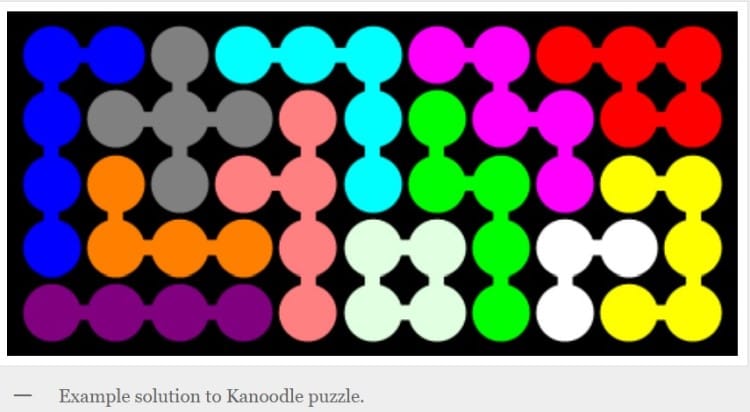
Puzzles encourage decision-making skills by giving kids alternatives and challenging them to choose the best. Children can look for patterns, recognize trends, and link unrelated information. These abilities may be used in real-world scenarios where critical thought is necessary for efficient problem-solving.
The Impact of Regular Play on Problem-Solving Abilities
Regular play, particularly for young children, greatly influences problem-solving skills. It allows kids to grow and improve their problem-solving skills while having fun.
The four advantages of frequent play on problem-solving abilities are:
- Improving thoughtful analysis: Children develop their ability to assess circumstances and come up with answers via frequent play.
- Promoting creativity: Imagination and creativity are fostered by regular play. Children may approach issues from several angles, encouraging creative thinking.
- Teaching resilience: Play often entails overcoming challenges or failures, which builds strength. Children learn to continue until they discover a solution and develop resilience from not giving up easily.
- Fostering teamwork: Children develop crucial cooperation abilities that aid in efficient problem-solving by cooperating to achieve a shared objective.
Spatial Awareness and Visual Perception: Learning through Kanoodle Challenges
Spatial awareness is the capacity to understand, reason, and interpret spatial relationships of objects and oneself in space. In playing Kanoodle, children learn to envision how various shapes fit together and acquire a grasp of spatial connections by manipulating the puzzle pieces.
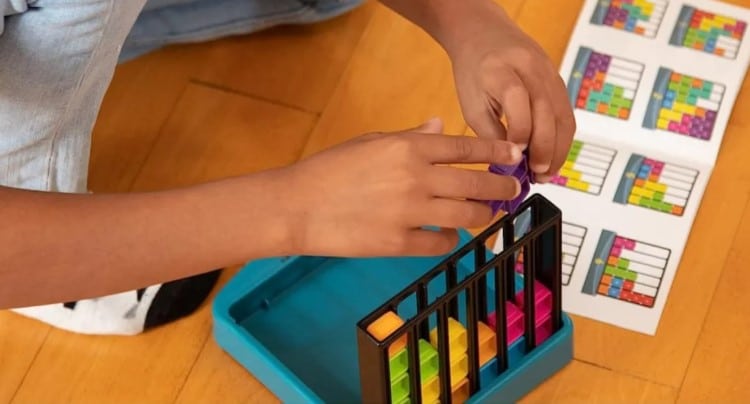
Visual perception entails analyzing visual data from our environment. Children must use their pattern recognition and ability to distinguish between similar things to complete Kanoodle problems. They hone their visual perception skills and number recognition abilities.
The puzzle-based learning approach promoted by Kanoodle also improves reflective thinking. Children learn reasoning techniques and how to approach issues from many aspects as they work through progressively tricky puzzles.
How Kanoodle Challenges Cognitive Skills
Kanoodle challenges stimulate young brains by promoting spatial awareness and visual perception while enhancing cognitive capabilities. Kanoodle offers a platform for kids to improve their cognitive skills in a fun and exciting manner via various games and puzzles.
The emphasis on mental challenge in Kanoodle is one of its main features. Players must be critical and strategic to solve the game’s riddles. Its distinctive gameplay assists in enhancing spatial reasoning, which is essential for many real-life situations.
Elevating Spatial Awareness: Delving into Kanoodle Extreme
Engaging with puzzle games has been heralded for its ability to refine various cognitive skills among players. Particularly, Kanoodle Extreme, an advanced rendition of the original Kanoodle game by Educational Insights, stands out for its emphasis on enhancing spatial awareness.
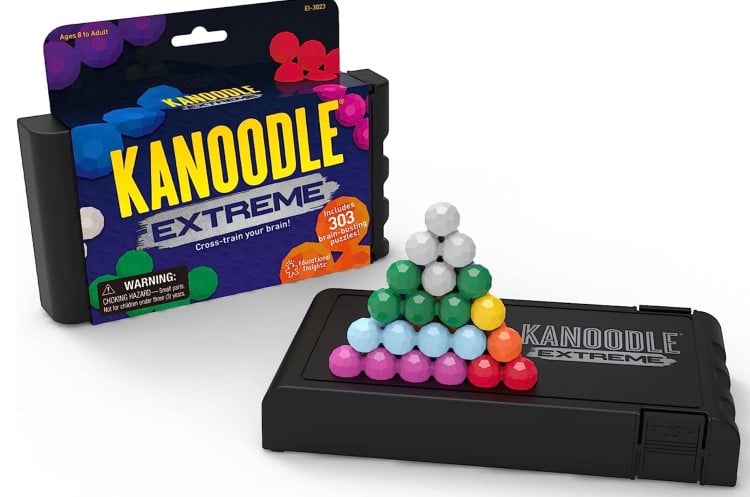
Here’s a closer look at what makes Kanoodle Extreme a notable tool for nurturing spatial awareness:
- Advanced Puzzles – With many 2D and 3D challenges, Kanoodle Extreme transcends the original’s complexity, demanding a heightened sense of spatial awareness as players navigate its various puzzles.
- Increased Puzzle Count – Boasting over 300 puzzles, Kanoodle Extreme provides a long-lasting and progressively challenging gameplay experience.
- Age Range – Recommended for ages 8 and up, Kanoodle Extreme is tailored for older kids, teens, and adults, offering more advanced spatial reasoning challenges.
- Solo Gameplay – The solo gameplay aspect encourages players to explore and understand spatial relationships independently while working through the puzzles.
Kanoodle Extreme is more than a mere extension of the original Kanoodle game. Its intricately designed puzzles and the demand for a higher level of spatial reasoning make it an exemplary tool for elevating spatial awareness among players.
Fine Motor Skills and Hand-Eye Coordination: Building Dexterity with Kanoodle
Playing Kanoodle has several benefits, including developing motor skills and improving dexterity.
A kid needs strong motor abilities to develop and be healthy generally. Children may significantly enhance their fine motor abilities by participating in activities that call for exact hand motions, such as completing puzzles in Kanoodle. Their fingers grow more nimble as they maneuver the puzzle pieces, making it easier for them to carry out challenging tasks.
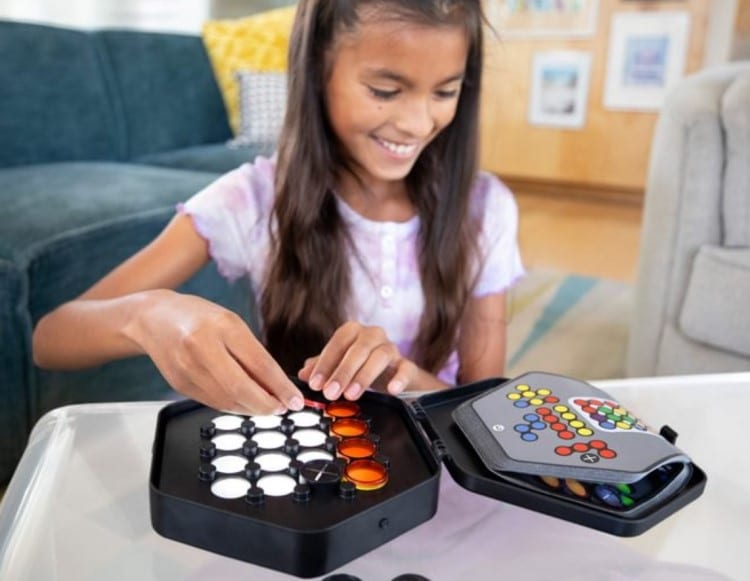
Good hand-eye coordination is essential for children’s development because it enables them to engage with their environment.
How Playing Kanoodle Enhances Hand-Eye Coordination
Handling colored puzzle pieces in Kanoodle facilitates the development of dexterity and fine motor abilities, eventually enhancing hand-eye coordination.
Here are ways that Kanoodle might improve finger strength and fine motor development:
- Children must use their fingers precisely as they insert the puzzle pieces onto the board to achieve a flawless fit. This enhances their hand-eye coordination and precision.
- The gripping, pinching, and manipulating motions needed to manage the tiny puzzle pieces in Kanoodle gradually assist in building stronger finger muscles.
- Children improve their hand-eye coordination as they perform accurate hand motions by visually inspecting the puzzle board and choosing the appropriate piece to match.
Kanoodle Exercises for Improving Dexterity
Exercises on Kanoodle need a lot of focus and patience, particularly as the puzzles get more challenging. Due to its intense attention, this exercise teaches people how to be careful, which is helpful for occupations requiring a high degree of dexterity.
Agility may be improved with consistent practice, just like any other ability. The many degrees of effort offered by Kanoodle puzzles allow for a developing challenge that may eventually result in increased dexterity.
When completing Kanoodle puzzles, cognitive function and motor abilities interact closely, which enhances neuro-motor functioning and dexterity. People may improve their skills in a pleasant, engaging, and intellectually challenging way by including Kanoodle exercises in daily or regular practice.
Accessing Kanoodle Online for Learning On the Go
You may visit Kanoodle online and play the game anytime you’re on the move to improve your learning experience and dexterity further.
Playing Kanoodle Online has several features and benefits for players. Kanoodle Online has many elements intended to keep kids interested and engaged. It provides varying degrees of difficulty, enabling kids to advance at their own rate and push themselves as they develop their talents.

Features and Benefits of Kanoodle Online
Kanoodle Online is a fantastic online teaching tool for parents and instructors. It provides a practical platform where kids may access interactive puzzles whenever and wherever they choose, encouraging ongoing education outside of the classroom.
Here are some reasons why young toddlers may consider using Kanoodle online:
- Convenience: You can easily play Kanoodle from any location with internet access. There is no need to carry about or be concerned about losing actual game components.
- Learning on the go: Young children may continue their education even while away from home, thanks to online access.
- Interactive gameplay: Kanoodle’s online edition provides kids a fun and interactive experience. Thanks to its vibrant colors and simple controls, it keeps children amused as they study.
- Measuring progress: Online platforms often include tools for measuring progress, enabling parents or educators to keep tabs on their child’s growth and, if necessary, give tailored assistance.
Requirements for Online Play: What You Need
Kanoodle Online is ideal for learning on the fly since it makes it possible to enjoy the game whenever and wherever.
Before you begin, ensure you have a suitable device, such as a computer, tablet, or smartphone. These devices should be capable of supporting the online version of Kanoodle and have a current web browser. It’s advised to have a dependable Wi-Fi connection for the best results.
It’s crucial to be aware that internet gaming may have age limits. Users must be of a specific age to access the material on certain platforms or websites. Before letting small children play unattended, be careful to double-check these conditions.
Final Thoughts
Kanoodle is an excellent educational puzzle game that may help young children develop dexterity and critical thinking abilities.
This game, which has roots in the 1980s, was created to provide an enjoyable and exciting learning experience.
One intriguing fact is that research has revealed that kids who play puzzle games like Kanoodle often outperform their classmates academically and have higher IQ ratings.
So, Kanoodle is definitely worth checking out if you’re searching for a game that mixes entertainment with learning.

Kiezela Quiz once whizzed through clouds as a flight attendant, but her love for books and penning down thoughts lured her back to solid ground. Now, she is a full-time writer, and every week she dishes out articles on education, gaming, and pretty much anything that sparkles under the sun.

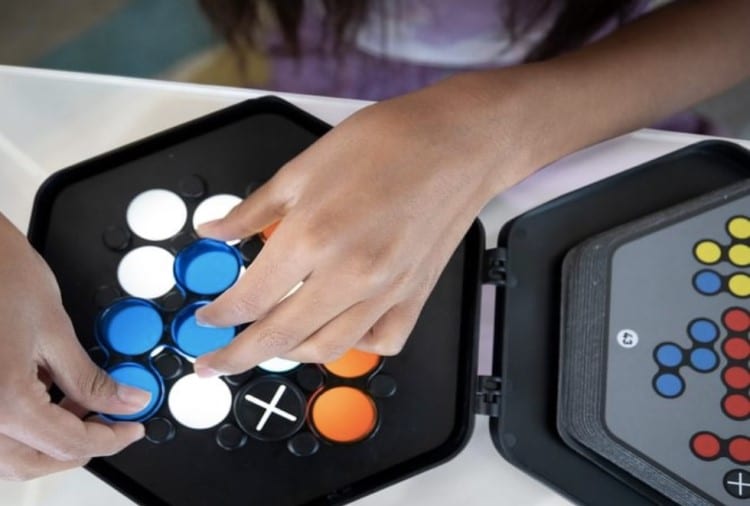







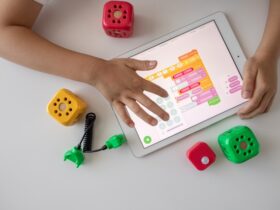




Leave a Reply